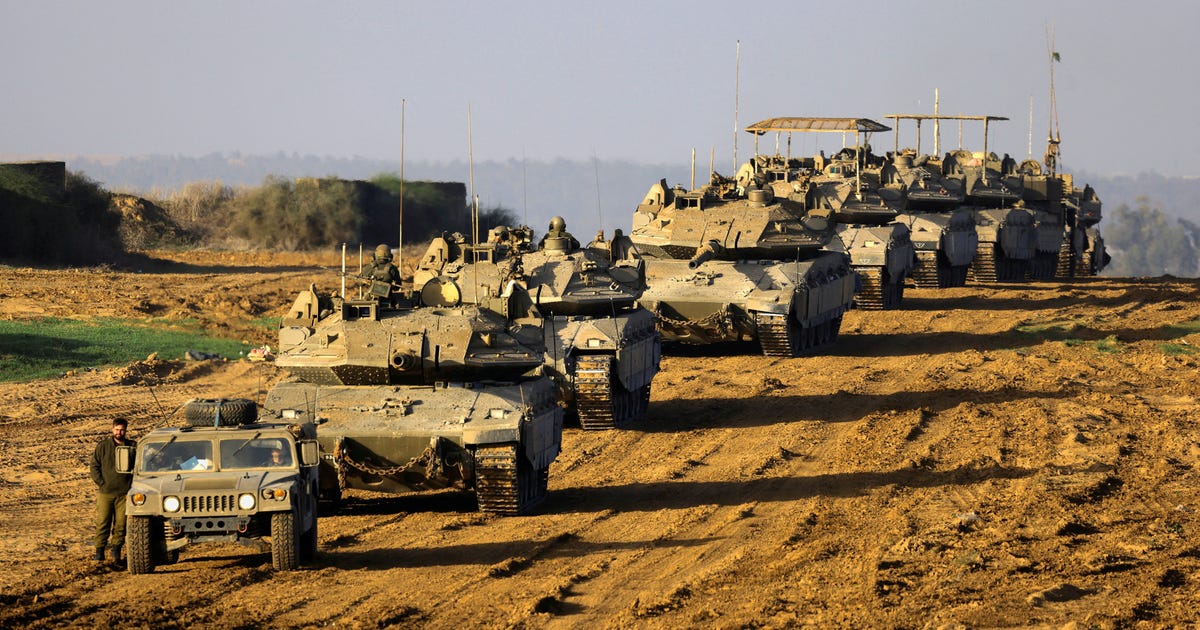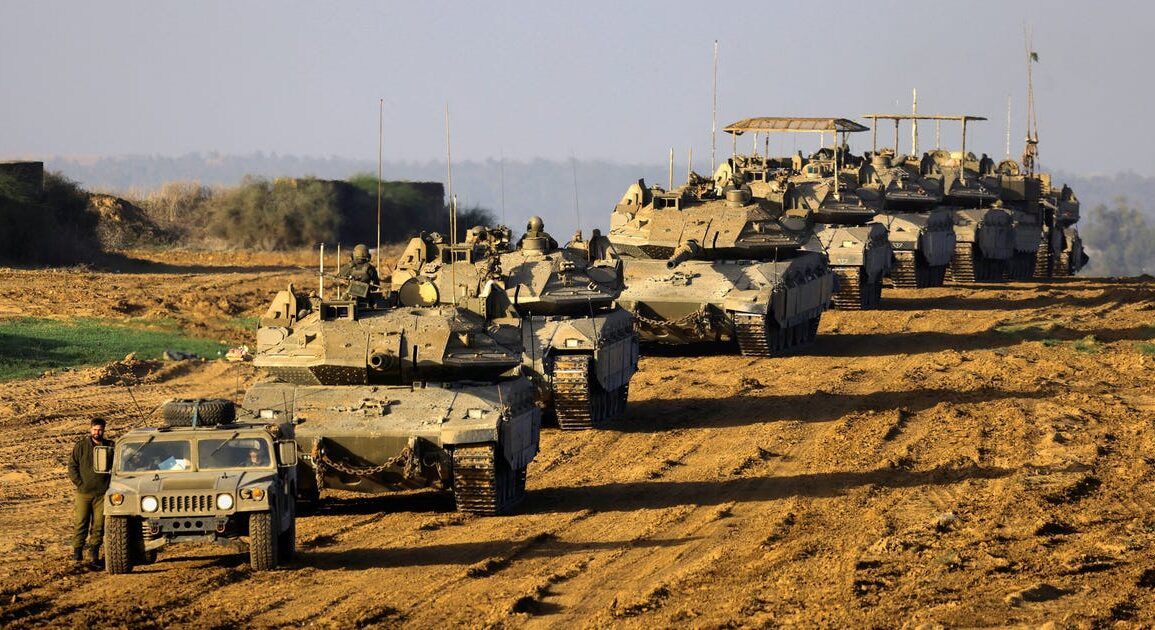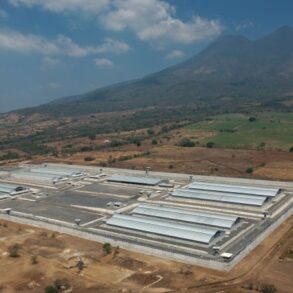
Palestinians stuck in Egypt due to the war in Gaza on Friday began returning to the territory, a Palestinian official said, after a temporary truce between Israel and Hamas went into effect earlier in the day.
Under the terms of an agreement between the Egyptian authorities and the Palestinian embassy in Cairo, Palestinians who were stranded in Al-Arish – a town near the border – had started to pass through the Rafah crossing to Gaza, according to Kamal Al-Khatib, the Palestinian embassy’s delegate at the crossing and head of the Palestinian community in the Sinai region. There are 920 Palestinians stranded in Al-Arish, he said.
He told DPA that other Palestinians who were stranded in Cairo would begin the journey back to Gaza from Saturday.
Egyptian television Al-Qahera News showed images of dozens of people carrying and pulling their bags as they entered Rafah, the only border crossing into the Gaza Strip that is not controlled by Israel.
On Thursday, the embassy said it had been informed by Egyptian authorities that Palestinians stranded in the northern part of Egypt’s Sinai can “voluntarily return.”
Meanwhile, many people have been trying to get out of Gaza. Hundreds of foreigners and Palestinians with second passports have been able to leave the sealed-off strip via Rafah in recent weeks.
On Friday, 17 injured people and five cancer patients left Gaza for treatment in Egypt, Raed Abdel-Nasser, an Egyptian Red Crescent official in northern Sinai said.
Egyptian President Abdel-Fatah al-Sissi on Friday said his country had facilitated the departure of citizens from more than 30 countries from Gaza.
At a press conference in Cairo, he again rejected any forced displacement of Gazans to Egypt.
A World Health Organization spokesperson said on Friday that it was working on further evacuations from northern Gaza hospitals as soon as possible as a truce gets underway, voicing fears for the safety of those remaining in Al-Shifa Hospital.
“We’re extremely concerned about the safety of the estimated 100 patients and health workers remaining at Al Shifa,” said WHO spokesperson Christian Lindmeier.
He declined to react to comments from the Hamas-controlled health ministry in Gaza saying it was suspending cooperation with the global health agency amid reports that Israel is holding medical staff for questioning.
The Israeli army is said to have clashed with Palestinians who were travelling to the north of the Gaza Strip against military orders, according to Hamas sources in the territory.
The sources said that two people were killed by gunfire in the central area of the Gaza Strip and others were injured.
Eyewitnesses reported that the army had used tear gas.
An Israeli military spokesman said the reports were being investigated.
The Israeli army revealed Friday more information on the process of returning hostages held in Gaza.
According to the IDF, a list of names of those who are expected to be released will be given to Israel every day, around 4 P.M. From there, the army will send officers to notify the family members whether their loved ones will be released or not.
The Israeli army said the hostages would be received “in the vicinity of the border,” and from there they will be taken to Hatzerim Air Force Base in southern Israel.
From Hatzerim, the released hostages will be taken to hospitals, where they will be reunited with family members. Older women will be taken to a different hospital than young children. All of the released hostages are expected to remain under medical supervision for at least two days.
24 female security prisoners and 15 male security prisoners who are expected to be released as part of the prisoner exchange deal with Hamas have left Damon and Megiddo prisons and are headed towards Ofer prison.
From there, they will be released about two hours after the delivery of the Israeli hostages.
With the ceasefire in Gaza under way, 10 ambulances were on their way to evacuate patients from Gaza City in the north of the territory on Friday, according to the Palestinian Red Crescent ambulance service.
The operation was “coordinated and accompanied” by the United Nations, the Red Crescent wrote on X, formerly known as Twitter.
The ambulances had set off from Khan Younis in the south of the coastal strip. Their mission was to bring sick and injured people from Al-Ahli Hospital in Gaza City, the biggest city in the strip.
The United Nations Office for the Coordination of Humanitarian Affairs (OCHA) recently said that Al-Ahli Hospital was only operating at minimum capacity.
According to the WHO, 22 of the 36 hospitals in the Gaza Strip have now ceased operations due to the war between Israel and Hamas.
Hamas turned to the prisoner exchange deal negotiation mediators, and demanded that Israel fulfill the terms of the agreement and release the young prisoners according to the time they have spent in prison, Palestinian Prisoners’ Administration head Qadura Fares told Haaretz.
According to Fares, seven of the 15 young prisoners that Israel intends to release as part of the deal with Hamas were arrested during the past year. He claims this is a violation of the understandings reached in the agreement, according to which those who served a longer sentence in Israeli prisons should be released.
IDF says alarms activated earlier in Eilat were false alarms, there are no current security concerns.
According to Eilat Municipality, suspicious movement was identified in the area, however there was no interception.
Sirens were activated in Eilat, the southernmost city in Israel, over a suspected drone infiltration.
Reports from the Gaza Strip claim 15 Palestinians who were trying to cross on Friday from the south of the Strip to the north, following the cease-fire, were wounded by IDF fire.
They were evacuated to a hospital in Deir al-Balah in central Gaza.
Israel will on Friday release 39 Palestinians prisoners, among them 24 women and 15 teenaged males, in the West Bank in exchange for 13 hostages due to be freed from the Gaza Strip by Hamas, a Palestinian official said.
The inmates, all of them from the West Bank or Jerusalem, will be handed over to the International Committee of the Red Cross at Israel’s Ofer military jail around 4 P.M., said Qadura Fares, Palestinian commissioner for prisoners.
That would coincide with the planned handover at the Gaza-Egypt border of 13 women and children who were among some 240 people taken hostage by Hamas gunmen during a deadly October 7 rampage in southern Israel.
“After the Red Cross receives the (Palestinian) prisoners, the ones from Jerusalem will go to Jerusalem and the ones from the West Bank will gather in Betunia municipal council where their families will be waiting,” Fares told Reuters.
The prisoner release was part of an Israeli-Hamas ceasefire that began at 7 A.M. and appeared to be holding shakily with no major reports of bombings, artillery strikes or rocket attacks, although both sides were accused of violations.
The 13 hostages who are supposed to be released today are expected to be handed over to Israel at 4:00 P.M., most likely through the Rafah border crossing.
According to the agreement, Hamas is supposed to collect the hostages from where they’ve been hiding them and hand them over to the Red Cross, who will accompany them to the Egyptian border. The Israeli army will transfer the released hostages to hospitals via helicopter. There, they will undergo an initial medical examination by the Israeli representatives and there will be a first telephone conversation between them and their families.
Released hostages who will need urgent medical treatment will be flown to Soroka Hospital and the rest will be distributed among the five medical centers where designated complexes have been prepared to receive them. There, their relatives will be waiting for them, alongside a medical and psychological team trained for the task. Later, they will undergo comprehensive medical examinations, and hostages who are not children will undergo a security interrogation.
Footage from the Gaza Strip reveals that residents crossed the bridge over the Gaza River towards the north, to an area that the IDF called to stay away from. This morning, the IDF spokesman in Arabic, Avihai Adrai, warned that “the northern area of the Gaza Strip is a dangerous war zone, and it is forbidden to move there.”
In the video he published, he addressed the residents of the Gaza Strip and said: “You can only cross from the north of the Gaza Strip to the south via the Salah al-Din road. The movement of residents from the south of the Gaza Strip to the north will not be allowed in any way.”
The IDF said yesterday that they are preparing to maintain the separation between the northern part of the Strip and the southern part and to prevent the return of Hamas members to the north. The army, it was said, was preparing with measures to disperse demonstrations along the Gaza River, in case many of the residents of the north ask to return to their homes.
The Israel Prison Service began the process of discharging Palestinian prisoners who are expected to be released on Friday as part of the negotiated cease-fire with Hamas. According to a statement released by the IPS, those prisoners will be transferred from Ofer Prison to the Beituniya Checkpoint in the West Bank, and from there they will be released to their homes.
Israel’s Justice Ministry has published a memorandum to amend legislation to allow child investigators to interrogate children under 14 who were abducted to the Gaza Strip and returned, or who witnessed the terrorist attack of October 7.
The law as it currently stands limits child investigations and states that in cases of terrorist acts, only a qualified police investigator can interrogate them. This is different from cases of sexual offenses and various violent offenses, where according to the law the children must be interrogated only by Welfare Ministry child investigators, who are social workers with special training for these cases.
The law amendment seeks to abolish the exclusion of acts of terrorism, in the case where the child is the victim of the act, with the aim of “reducing the additional harm to children that may be caused during the investigation”, as the proposal states. Another amendment to the law states that the children’s investigator must be consulted regarding the need for an investigation before summoning the children to it. “It is possible that a child investigator will consider that it is in the child’s best interest not to conduct an investigation in his case, and this should be taken into account,” it says.
In preparation for the expected return of children from Hamas captivity, inter-ministerial work was done regarding their absorption in Israel and recommendations were drawn up on the subject. The proposed amendment refers to aspects that arose from those recommendations.
National Council for the Child chairwoman, Vered Windman, told Haaretz that during questioning one must adhere to principles that will prevent the potential of harming to children. “Kidnapping them took away their sense of control, so it is important to give the children information in a very clear and friendly way about the goals of the questioning, and to explain what is going to happen from now on. To give the child control and choice,” she explained.
Aid trucks were entering the Gaza Strip from Egypt on Friday, around 1-1/2 hours after a truce began between Israel and Palestinian Hamas fighters, Reuters TV footage showed.
Two of the trucks, representing Egyptian organizations, sported banners that said, “Together for Humanity.” Another said: “For our brothers in Gaza.
The last-minute delay that occurred on Wednesday night in the implementation of the deal for the return of hostages held by Hamas has to do with a red flag the Israeli side raised, because of the people dealing with the formulation of the deal. The clarifications that were required from Hamas, via the Qatari mediators, did not elicit an appropriate response initially, and Israel requested additional answers.
On Thursday afternoon, Qatar again began projecting optimism and its Foreign Ministry announced that the cease-fire will begin Friday at 7 A.M., and in its wake the first group of 13 Israeli captives will be released at 4 P.M. But there are no holy dates in the Middle East, still less so holy hours.
It’s necessary to constantly bear in mind the identity of the dubious partner in this deal, namely Hamas’ leader in the Gaza Strip, Yahya Sinwar, whose promises are difficult to trust. It’s perfectly obvious that he has two goals in the negotiations: extending the cease-fire in the hope that the fighting will not be resumed, and inflicting maximum psychological abuse on the Israeli public.
The IDF warned the residents of the Gaza Strip who tried to go south due to the fighting not to move back north following the cease-fire.
In a video released by the IDF spokesman in Arabic, Lt. Col. Avichay Adraee, he addressed the residents of the Gaza Strip who fled to the southern part. “The war is not over yet,” he cautioned. “The northern area of the Gaza Strip is a dangerous war zone and it is forbidden to move there. For your safety, you must stay in the humanitarian zone in the southern part of the Gaza Strip. You can only cross from the northern part of the Strip to the south via the Salah al-Din road. Movement of residents from the southern part of the Strip to the north will not be allowed in any way.”
15 minutes into the cease-fire, rocket alarms were activated in the Gaza border communities Kissufim and Ein Hashalom.
Hamas has reportedly refused to allow the Red Cross to visit those Israeli hostages who will not be released in the first stage of the cease-fire and hostage-prisoner exchange between Israel and the organization.
London-based Al-Araby Al-Jadeed, citing Egyptian sources, said that Hamas is refusing to allow representatives of the International Committee of the Red Cross to visit sites where the remaining hostages are being held, saying instead that it would update the ICRC about their condition.
Earlier this week, Prime Minister Benjamin Netanyahu’s office claimed that Israel had negotiated the inclusion of a clause in the hostage deal for the ICRC to visit all of the remaining hostages in Gaza – a claim that the Red Cross rebuffed, saying in a statement that it had not been updated about any such plans.
“Since October 7, 2023, the ICRC has continuously asked for the release of all hostages held in Gaza and their humane treatment. We haven’t stopped doing so and will continue as long as it takes,” the organization said. “Thus far, the ICRC has not been made aware of any agreement reached by both parties related to visits by the ICRC to the hostages. Should visits be agreed upon, the ICRC stands ready to visit. The ICRC does not take part in the negotiations between the parties to the conflict.”
The Israel-Hamas cease-fire went into effect on Friday at 7 A.M. local time, and later on Friday 13 Israeli hostages – including women and children – are expected to be released by Hamas.
■ The cease-fire is set to last for four days, during which 50 Israeli hostages in total are expected to be released in four consecutive groups, in exchange for the release of 150 Palestinian prisoners. For every ten additional hostages released, the cease-fire will be extended by a day, up to a maximum of ten days.
■ During every day of the cease-fire, hundreds of humanitarian aid trucks will enter Gaza.
■ The IDF will cease aerial activity over southern Gaza, and limit activity in the north. Hamas will use the pause in fighting to locate other hostages.
Click here for entries from the previous live blog.
This post was originally published on this site be sure to check out more of their content.







